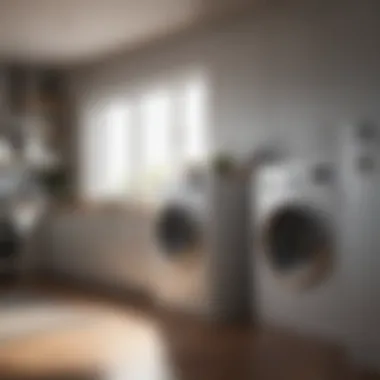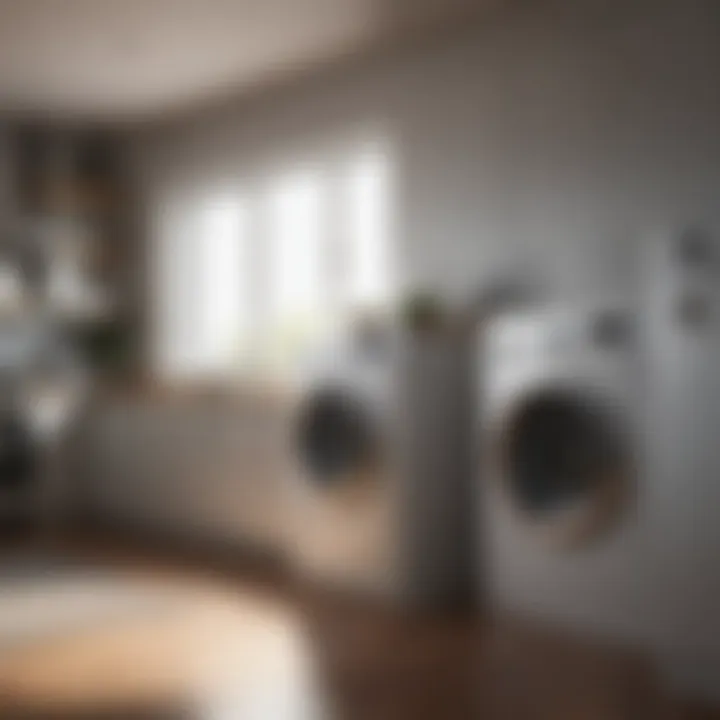Effective Strategies to Cut Your Electricity Bills


Intro
Reducing electricity bills is a common goal for many individuals and households. With rising energy costs, finding effective strategies to lower these expenses is essential. This article offers practical insights into approaches that can be applied in daily life, ranging from behavioral shifts to significant investments in technology. Understanding how energy is consumed and exploring modern solutions plays a vital role in reducing overall costs.
In this guide, we will discuss various tactics that can help young professionals, families, and students save on electricity expenditures. Take the time to evaluate your energy habits and consider how minor adjustments can lead to significant savings over time.
Understanding Your Electricity Bill
Understanding your electricity bill is crucial for any household aiming to manage their energy consumption financially. Each bill provides insight into usage patterns and costs associated with various components of electricity consumption. By becoming familiar with the essential parts of your bill, you can identify areas to target for cost-saving strategies effectively.
Components of an Electricity Bill
Base charges
Base charges are the fixed costs that you incur regardless of your energy usage. Typically, they cover the basic fee for being connected to the electricity grid and can include costs for maintenance and infrastructure. The key feature of base charges is that they do not change with your consumption levels, meaning you will be billed the same amount every month.
The important aspect of base charges is their predictability in your electricity budget. This consistency makes it easier for households to plan their finances. However, people often overlook the impact of these charges when assessing their overall bill. While beneficial in stability, high base charges can lead to frustration when a household’s consumption decreases, yet the cost remains unchanged.
Usage charges
Usage charges reflect the variable amount billed based on the energy consumed during a billing cycle. It is crucial to understand how these charges impact total costs, as they fluctuate according to your electricity use. Most utility providers charge a tiered rate, meaning the more energy you consume, the higher you might be charged per unit.
The key characteristic here is that consumption can be controlled. You can take actionable steps to reduce usage charges through behavior changes or adopting energy-efficient appliances. However, high usage charges can become concerning as household needs vary throughout the year, especially in extreme weather months when heating or cooling is necessary.
Taxes and fees
Taxes and fees apply to your electricity bill and can include state taxes, local taxes, or associated fees charged for services. These costs vary based on location and are often regulated by government policies. The defining feature of taxes and fees is that they are generally non-negotiable; they are mandated by law or regulations, thus making them an unavoidable cost.
While they contribute to vital services, their presence on your bill can be frustrating since they do not correlate with your consumption levels. Recognizing the portion of your bill attributed to taxes and fees can help you understand your overall picture of electricity expenditures and point to areas to potentially influence in the future.
Reading Your Bill Accurately
Accurate bill reading is essential for active engagement in energy consumption management. Recognizing specific usage patterns or costs enables more informed decisions around energy use.
Identifying usage trends
Identifying usage trends allows you to pinpoint specific patterns in consumption over time. By monitoring the fluctuations in your electricity use, you can compare how lifestyle changes result in different usage levels. This process provides clarity on peak periods and informs strategies you might employ to lower bills in those high consumption intervals.
The primary advantage is that you can realistically estimate areas where savings are possible. For instance, learning that electricity usage spikes during specific hours may encourage shifts in when appliances are used. However, achieving this requires attentiveness and may not be immediately obvious without meticulous tracking.
Comparing past bills
Comparing past bills can reveal valuable insights into how energy consumption evolves over time. Spotting increases or decreases helps set expectations for future bills and can inform energy management strategies.
This comparison is beneficial as it highlights the influence of seasonal changes or appliance efficacy. With a historical perspective, you can illustrate your progress or setbacks in managing energy use. Nevertheless, it can be cumbersome to track detailed changes without a systematic approach.
Spotting anomalies
Spotting anomalies in your bill may uncover unexpected changes in your energy use, which could indicate problems such as faulty appliances or even billing errors. By carefully analyzing trends and confirming that standard patterns are consistent, you better gauge your consumption.
This process is important because it enhances awareness of your home’s energy health. Yet, it requires regular scrutiny of your bill, which could become tedious if it is not part of a regular review routine.
Analyzing Energy Consumption Patterns
Understanding energy consumption is critical for any effort to lower electricity bills. This section focuses on the analysis of usage patterns within the home. By examining where and how energy is consumed, individuals can pinpoint high consumption areas. This can lead to direct action and behavioral changes that effectively lower overall energy costs. The insights gained from analyzing these patterns provide a clearer picture of energy habits, leading to informed decisions about appliances, habits, and potential upgrades.
Identifying High Consumption Areas
Room by room analysis
A room by room analysis is a systematic examination of each room in the household. This method highlights significant areas of energy use. For instance, kitchens and living rooms often consume more energy due to lighting and appliances. By identifying which rooms use the most energy, residents can make targeted adjustments, such as changing light bulbs or upgrading old appliances.
The key characteristic of room by room analysis is its detailed approach. Unlike a general overview, this method provides specific insights into each space, making it great for maximizing energy efficiency. One unique feature of this approach is that it can help in recognizing habits that may lead to higher bills. For example, noticing that certain rooms are used more during peak hours can encourage shifts to off-peak usage.
Nevertheless, it has some disadvantages. Conducting a thorough room by room analysis can be time-consuming, and it might require additional metering devices or a bit of technical knowledge.
Appliance usage review
Appliance usage review focuses on the performance and efficiency of major home devices. This review involves checking energy ratings and actual usage hours of appliances like refrigerators, washing machines, and air conditioners. For example, older models may consume much more energy than newer, energy-efficient models. This is particularly significant because appliances account for a large part of household electricity use.
The key characteristic of an appliance usage review is its emphasis on current efficiency. By evaluating each device’s energy consumption, households can identify culprits costing them extra money. This review is an essential choice in this discussion because upgrading or adjusting usage can yield significant savings.


A unique feature of this analysis is the ability to compare the performance of different devices. This method can provide insights into possible upgrades or replacements that can enhance energy savings. However, the challenge lies in accessing detailed appliance usage data. Many consumers may not be aware of how much energy each appliance truly uses or may not want to invest in new ones immediately.
Utilizing Energy Monitoring Tools
Energy monitoring tools greatly enhance the ability to track and analyze energy consumption. These tools allow users to see real-time data on how electricity is used across various devices. This transparency helps in recognizing unexpected spikes in consumption.
Smart meters
Smart meters provide a digital solution for monitoring energy usage. They transmit real-time data about electricity consumption directly to utility companies and homeowners. This enables users to see their energy usage patterns and adjust them accordingly. Compared to traditional meters, smart meters deliver more accurate bills by measuring usage more effectively.
A prominent characteristic of these meters is their ability to provide detailed usage insights. This real-time view helps consumers become more aware of their habits and identify opportunities for savings. A smart meter is beneficial in this article, as it encourages active participation in energy management.
One downside can be the initial cost of installation if not provided by the utility company. Moreover, some users might feel overwhelmed by the amount of data available.
Mobile applications
In conjunction with energy monitoring tools, mobile applications offer a convenient way to track electricity usage. These applications often sync with smart meters and can provide insights based on user behavior. They allow users to monitor daily, weekly, or monthly trends in a user-friendly format.
The key characteristic of these applications is their accessibility. Homeowners can access information on the go, making it easier to adjust consumption habits. Mobile apps are a favorable choice for readers focused on reducing electricity costs since they provide immediate feedback.
A unique feature of mobile applications is their interactive nature. Many include tips, reminders, and personalized advice on cutting down usage. However, there can be those who struggle with technology and find it challenging to set up or use these tools effectively.
Behavioral Adjustments to Save Energy
Making behavioral changes is crucial in reducing electricity bills. Often, it is not just appliance efficiency or infrastructure that impacts costs, but the patterns of energy usage that individuals and families adopt. Behavioral adjustments can lead to significant savings without necessitating large investments. Incorporating simple changes into daily routines can foster an atmosphere where everyone in the household is more conscious of energy consumption. This awareness is key to managing and ultimately reducing electricity bills.
Optimizing Usage Hours
Peak vs. off-peak hours
Optimizing usage hours involves understanding the difference between peak and off-peak hours. Peak hours are typically when energy demand is highest, and utility companies often charge significantly more during these times. In contrast, off-peak hours are those times when energy consumption is lower and rates are more favorable. Utilizing off-peak hours can lead to substantial savings. Modern households can shift their high-energy activities, such as laundry and dishwashing, to these off-peak times.
It is a beneficial strategy because it reduces the overall electricity cost. Consumers enjoy lower rates and can even help decrease the strain on the grid during peak times. However, not every utility offers attractive off-peak pricing. Therefore, it is important to check with the provider.
Time-of-use rates
Time-of-use rates are another aspect consumers should explore. This pricing structure charges different rates at various times of the day, incentivizing users to adjust their consumption accordingly. The key characteristic of time-of-use rates is flexibility. Families can save money by scheduling power-intensive tasks when rates are lower.
One unique feature is that it encourages energy conservation and efficiency. While they can result in lower bills, these rates may require some planning and adjustments in daily life. A change in personal habits may feel inconvenient at first, but the savings can outweigh these initial challenges.
Creating Energy-Efficient Routines
Daily tasks timing
Timing daily tasks effectively can lead to noticeable energy savings. Certain activities, like cooking or cleaning, consume significant energy. Coordinating these tasks during off-peak hours can reduce costs drastically. The importance of this aspect lies in creating routines that optimize energy use without compromising daily life.
Creating regular habits around energy use is a beneficial practice for families. It can also lead to more efficient routines throughout the home, as timing tasks can align energy consumption with lower rates. The disadvantage here might be the need to constantly monitor energy rate cards.
Family habits
Family habits play an essential role in energy conservation. For example, engaging family members in energy-saving practices can foster a collective sense of responsibility. Implementing simple rules, such as turning off lights when leaving a room or unplugging devices not in use, can lead to cumulative savings.
The unique feature of focusing on family habits is that it encourages communication about energy use. Educating all members of the household can enhance awareness of energy conservation. However, it requires commitment from everyone, and not all family members may be immediately receptive to these changes.
Investing in Energy-Efficient Appliances
Investing in energy-efficient appliances plays a crucial role in reducing electricity bills. These appliances consume less energy compared to their traditional counterparts, which translates to lower utility costs over time. Moreover, energy-efficient appliances are designed to minimize energy waste, making them environmentally friendly. The long-term savings from these appliances can often offset their higher initial purchase price, making them a wise investment for households.
One must consider various factors when investing in energy-efficient appliances. The initial cost, the efficiency ratings, and the expected lifespan are all significant considerations. Additionally, more efficient appliances can enhance home comfort by providing better performance while using less energy.
Evaluating Appliance Efficiency Ratings
Energy Star Ratings
Energy Star ratings serve as a benchmark for energy efficiency among appliances. This program, initiated by the U.S. Environmental Protection Agency, identifies and promotes energy-saving products. The key characteristic of Energy Star-rated appliances is their optimal performance while consuming significantly less energy than average models. By choosing products with this label, consumers can benefit from reduced energy bills and contribute to lowering greenhouse gas emissions.
A unique feature of Energy Star appliances is their rigorous testing process. Each appliance undergoes strict evaluation before receiving the label. While these products often have a higher upfront cost, their efficiency can lead to substantial savings in energy costs, making them a popular choice for families looking to reduce expenses.
Consumer Reports Insights
Consumer Reports provides rigorous evaluations of appliances, focusing on performance, efficiency, and customer satisfaction. The insights generated from their reviews help potential buyers make informed decisions. One of the most important characteristics of Consumer Reports is its unbiased assessment of products based on real-world testing. This resource is beneficial as it offers reliable information regarding the efficiency of various models available on the market.
The unique feature of Consumer Reports is the comprehensive breakdown of energy usage alongside durability ratings. This information can guide consumers in selecting appliances that not only save energy but also last longer. However, it’s important to consider that access to full reports may require a subscription.


Cost-Benefit Analysis of Upgrades
Initial Costs vs. Savings
Understanding the balance between initial costs and potential savings is vital in a cost-benefit analysis. Investing in energy-efficient appliances often requires a higher upfront investment compared to standard models. However, evaluating the savings on energy bills is crucial to make an informed choice. Customers should calculate potential energy savings over time and compare them to the additional costs. This method will clarify whether the investment is justified.
The benefit of conducting a thorough analysis is clear. Consumers can see the financial impacts of their decisions and know when they can expect to break even on the investment.
Payback Period
The payback period is a crucial metric that individuals should assess when considering new appliances. It refers to the time it takes for the savings on energy bills to cover the initial cost of the more efficient appliance. A shorter payback period indicates a more favorable investment scenario. For many energy-efficient appliances, the payback period can range from a few months to several years, depending on usage and energy costs.
Knowing the payback period helps consumers to gauge the viability of their investment. Some may find that appliances with longer payback periods still save money in the long run, while others may prefer options that pay back quickly. Each household will have different thresholds for what constitutes a good investment, so personal consideration is important.
Improving Home Insulation and Sealing
Improving home insulation and sealing is an essential strategy for reducing electricity bills. Proper insulation prevents heat loss during winter and keeps homes cool in summer. This is crucial as it minimizes the need for heating and air conditioning. By creating a well-insulated home, individuals can save a significant amount on energy costs. The benefits extend beyond financial savings; improved insulation also contributes to enhanced comfort and better air quality. Several considerations exist when discussing insulation and sealing, such as the materials used and the techniques for implementation.
Assessing Insulation Quality
Attic and wall insulation
Attic and wall insulation play a pivotal role in maintaining a home's climate control. Good insulation in these areas can lead to substantial energy savings. The key characteristic of attic and wall insulation is its ability to resist airflow and minimize heat transfer. Materials like fiberglass batts or foam boards are popular choices for effective insulation.
The unique feature of attic insulation is its positioning, which acts as a barrier against rising heat during hot months. The advantages of using proper attic and wall insulation include significant reductions in heating costs during winter and cooling costs during summer. However, the disadvantages, such as installation complexity or initial cost, should also be acknowledged. Ensuring adequate insulation in these areas is vital for realizing the full benefits of a weatherized home.
Windows and doors
Windows and doors contribute significantly to home energy efficiency. Poorly sealed windows or flimsy doors can cause substantial air leakage. The key characteristic here lies in their framing and sealing. Double-glazed windows and solid core doors are effective options that can dramatically reduce energy loss.
The unique feature of properly sealed windows and doors is the phenomenon of preventing drafts. This has direct implications on comfort levels in a home and can lead to lower heating and cooling demands. The advantages include enhanced energy efficiency and reduced utility expenses. On the downside, inadequate sealing can lead to moisture buildup, which leads to mold issues. Hence, maintaining quality in these areas is essential for minimizing electricity bills and ensuring indoor air quality.
DIY Sealing Techniques
Weather stripping
Weather stripping is a straightforward method for sealing gaps in doors and windows. This technique involves applying adhesive materials to block air leaks, enhancing a home's thermal envelope. The key characteristic of weather stripping is its affordability and ease of installation. Many people choose it as a beneficial starting point for energy savings.
One unique feature of weather stripping is its flexibility; different materials can be used depending on the gap size. The advantages of using weather stripping include quick installation and immediate visible changes in indoor comfort levels. However, it may require periodic replacement, as materials can wear out over time.
Caulking gaps
Caulking gaps is another effective method for improving insulation. This process involves sealing cracks and joints around windows, doors, and baseboards. The key characteristic of caulking is its durability and effectiveness in preventing air leakage. It is especially useful for smaller gaps that weather stripping may not adequately cover.
Caulking offers a unique feature where it can be painted to match existing surfaces, giving an aesthetic advantage as well. The advantages are clear: caulking can lead to noticeable temperature stabilization within the home and lower energy bills. Nevertheless, it does come with the disadvantage of requiring a skilled application; improper caulking can lead to ineffective sealing and moisture problems. Thus, proper technique and materials are important for achieving desired outcomes.
Adopting Renewable Energy Sources
Using renewable energy sources is an essential strategy for reducing electricity bills. Not only can these sources lessen dependency on traditional energy providers, they also contribute to environmental sustainability. By harnessing natural resources like sunlight, wind, and geothermal heat, homeowners can significantly decrease their utility expenses over time.
Evaluating Solar Panel Installation
Cost of installation
The cost of installation plays a crucial role in the decision to invest in solar panels. Initially, the price may seem high. However, potential long-term savings can make this an appealing choice. Consumers need to analyze factors like the size of the system, installation complexity, and specific local grants.
The unique characteristic of solar panel installation is its upfront investment. This can be a barrier for many. Yet, over time, reduced energy bills can justify the cost. Many homeowners find that solar panels pay for themselves within a decade through savings, contributing to a decrease in overall energy expenses.
Government incentives
Government incentives also impact solar panel installations significantly. These programs make transitioning to renewable energy more affordable. Such incentives are usually in the form of tax credits, rebates, or grants.
One key aspect of government incentives is their aim to promote cleaner energy utilization. For many, these incentives act as a financial motivator, offsetting initial expenses. This enables a broader audience to consider solar panel installation as a viable option. However, criteria to qualify for these programs vary greatly. Homeowners must stay informed about local and state offerings to maximize their benefits.
Other Renewable Options
Wind energy
Wind energy presents another renewable option worth considering. Utilizing wind turbines can help generate power efficiently. Wind energy is particularly useful in regions with consistent wind patterns, making it a beneficial choice for many households.
The key characteristic of wind energy is its renewability. Wind, being abundant, provides an advantage compared to non-renewable sources. That said, the installation cost and permit requirements can pose challenges for average consumers. Each household should evaluate their specific circumstances before proceeding with such an investment.


Geothermal heating
Geothermal heating is a reliable renewable energy option that taps into the earth's natural heat. This system can both heat and cool a home, which can lead to substantial savings on electricity bills.
The main benefit of geothermal heating lies in its efficiency. This system usually requires less energy for heating than traditional methods. However, the installation can require a significant upfront cost. This system can be seen as a long-term investment that pays off, especially in areas with extreme weather where heating and cooling are essential.
"Adopting renewable energy sources not only lowers bills but also promotes environmental health and sustainability."
With the right choice of renewable energy solutions, households can enhance their energy independence and contribute to a sustainable future. Understanding the financial implications and benefits of these sources is crucial when making informed decisions.
Understanding Utility Plans and Tariffs
Understanding utility plans and tariffs is essential when trying to manage and reduce electricity bills. Not all plans are the same, and selecting the appropriate plan can lead to significant savings. This section provides insights into the different types of utility plans and the factors that consumers should consider when evaluating their options.
Comparing Plans from Different Providers
Fixed vs. variable rates
The main characteristic of fixed-rate plans is stability. Consumers pay a set rate for their electricity, regardless of changes in market prices. This can be beneficial in times of rising prices as it offers predictability in budgeting. On the downside, if market prices drop, the consumer may miss out on potential savings.
Variable-rate plans fluctuate based on market conditions. They can be more economical when prices are low but may lead to higher costs during peak periods. Thus, consumers should weigh their tolerance for risk. If they prefer certainty in their billing, a fixed-rate plan may be the better choice.
Key considerations include evaluating historical price trends and understanding peak demand times. Consumers can often find lower variable rates but may need to closely monitor their usage to mitigate costs during peak demand.
Community solar programs
Community solar programs represent a unique opportunity for individuals to tap into renewable energy sources without the need for personal panels. These programs allow consumers to purchase or lease a portion of a solar installation. This can result in reduced electricity costs without upfront investment in solar equipment. The key characteristic is accessibility; even renters or those with inadequate roof space can benefit.
However, participation criteria can vary significantly among programs. Some may require long-term contracts or have geographic limitations, so it is crucial to assess local offerings. These programs can serve as a wonderful way for consumers to support sustainable energy while potentially lowering their bills.
Negotiating Rates with Your Utility Company
Negotiating with your utility provider can seem daunting, but it may lead to meaningful reductions in your electricity costs. Knowing how to approach this conversation can make a difference.
Understanding leverage points
Leverage points involve understanding the aspects of your usage that can be influenced. For example, consumers should review their energy consumption profile and identify areas where they might have more negotiating power, such as multi-property discounts or billing errors. Offering to commit to a longer-term contract in exchange for lower rates is another potential leverage point.
It’s important for consumers to recognize that utility companies are keen to retain customers. Well-informed consumers can enhance their position during negotiations. This understanding can lead to better terms and even customized products that meet their specific energy needs.
Effective communication strategies
Effective communication is vital in negotiations. Clearly articulating your objectives and being receptive to the company’s proposals can foster a productive dialogue. Start by gathering relevant data about comparable plans from other utilities to bolster your negotiation. This demonstrates that you have researched alternatives and are serious about switching if necessary.
A personal approach can also go a long way. Sharing specific circumstances, such as financial difficulties or being a long-time customer, may evoke a more favorable response from the utility company. Ultimately, a blend of clarity, research, and sincerity can fortify your negotiating stance.
Leveraging Government Programs and Rebates
Understanding how government programs and rebates work is essential for anyone looking to reduce electricity bills. These programs can significantly lessen the financial burden associated with energy costs. Additionally, they encourage energy-saving practices and promote adopting more efficient technologies.
Exploring Local Utility Rebate Programs
Energy-saving improvements
Energy-saving improvements usually refer to upgrades made to a home or building that enhance energy efficiency. The unique aspect of these improvements lies in their combination of functionality and sustainability. For instance, by adding insulation or upgrading heating systems, households can lower their energy consumption.
The primary characteristic that makes energy-saving improvements a popular choice is the potential long-term savings on utility bills. Many local utilities often provide rebates for such investments, making them financially attractive. However, homeowners must consider the initial costs and possible complexities involved in re-evaluating their energy systems and making necessary adjustments.
Appliance replacements
Appliance replacements focus on replacing older, less efficient appliances with newer energy-efficient models. This strategy can drastically affect reducing energy consumption, as many outdated appliances consume more energy than their modern counterparts.
The significant characteristic of appliance replacements is their immediate impact on energy efficiency. For example, Energy Star-rated refrigerators can substantially lower the amount of electricity used compared with older models. While this option is beneficial, consumers should understand the cost implications and the time needed for acquiring new appliances.
Federal and State Assistance Programs
Incentive programs
Incentive programs are government initiatives designed to encourage energy efficiency by providing financial support to households. These programs can include cash rebates for energy improvements and tax credits for various efficiency upgrades. The key feature of incentive programs is the potential for immediate financial relief.
Incentive programs are beneficial for many residents as they reduce upfront costs associated with significant improvements. However, there can be specific regulations and eligibility criteria that participants need to navigate, which could complicate access to these incentives.
Grants for energy efficiency
Grants for energy efficiency are funds awarded to individuals or organizations intended for energy-saving projects. Unlike loans, grants do not require repayment, making them a very attractive option for funding energy-efficient improvements. Their notable characteristic is that they allow for larger projects that might otherwise be financially unviable.
These grants often support initiatives like home weatherization or the installation of renewable energy sources. While they are advantageous, the competition for grants can be intense, and applicants may need to prepare extensive documentation to secure funding.
"Leveraging government programs and rebates not only cuts costs but pushes towards a sustainable energy future."



